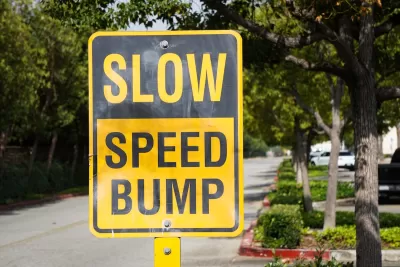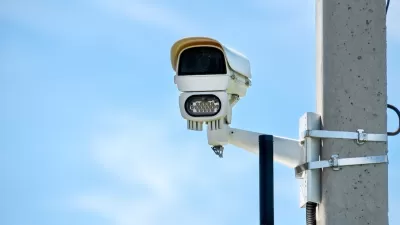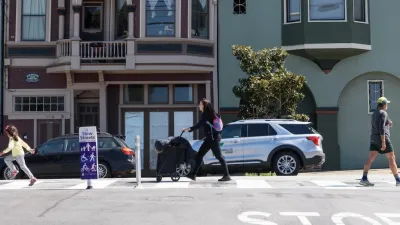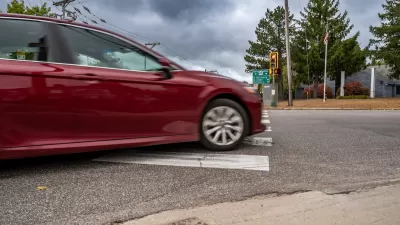The city is installing ‘vertical deflection devices’ such as speed tables on some of its most dangerous streets.

Philadelphia’s Lincoln Drive is set to receive a traffic calming overhaul, reports Aaron Moselle for WHYY, in an effort to make a dangerous stretch of street safer for all road users. Lincoln Drive is the second state road to get a traffic calming treatment thanks to a partnership between the city and the Pennsylvania Department of Transportation (PennDOT).
According to Moselle, “A series of traffic calming measures will be installed along 1.5 miles of the state highway, between West Allens Lane and West Cliveden Street in West Mount Airy.” The upgrades include rumble strips, speed tables, and lane separators. “Lincoln Drive will be just the latest roadway in Philadelphia with some form of vertical deflection, a category of devices designed to slow down drivers that includes speed humps, speed tables, and raised pedestrian crossings.”
The city defines a roadway as having a ‘speeding problem’ if 85 percent of vehicles travel more than 5 miles per hour over the posted speed limit, Moselle explains.
Since 2015, the city has installed similar ‘vertical deflection’ measures on over 350 blocks, often at the request of residents. Once a request is submitted, “The Streets Department then conducts a two-week traffic study on the block, reviews crash data, and talks to neighbors to determine if the location meets its criteria for vertical deflection devices.”
FULL STORY: Philly’s Lincoln Drive is the latest city roadway to receive traffic calming measures

Alabama: Trump Terminates Settlements for Black Communities Harmed By Raw Sewage
Trump deemed the landmark civil rights agreement “illegal DEI and environmental justice policy.”

Planetizen Federal Action Tracker
A weekly monitor of how Trump’s orders and actions are impacting planners and planning in America.

The 120 Year Old Tiny Home Villages That Sheltered San Francisco’s Earthquake Refugees
More than a century ago, San Francisco mobilized to house thousands of residents displaced by the 1906 earthquake. Could their strategy offer a model for the present?

LA’s Tree Emergency Goes Beyond Vandalism
After a vandal destroyed dozens of downtown LA trees, Mayor Karen Bass vowed to replace them. Days later, she slashed the city’s tree budget.

Sacramento Leads Nation With Bus-Mounted Bike Lane Enforcement Cameras
The city is the first to use its bus-mounted traffic enforcement system to cite drivers who park or drive in bike lanes.

Seattle Voters Approve Social Housing Referendum
Voters approved a corporate tax to fund the city’s housing authority despite an opposition campaign funded by Amazon and Microsoft.
Urban Design for Planners 1: Software Tools
This six-course series explores essential urban design concepts using open source software and equips planners with the tools they need to participate fully in the urban design process.
Planning for Universal Design
Learn the tools for implementing Universal Design in planning regulations.
Ada County Highway District
Clanton & Associates, Inc.
Jessamine County Fiscal Court
Institute for Housing and Urban Development Studies (IHS)
City of Grandview
Harvard GSD Executive Education
Toledo-Lucas County Plan Commissions
Salt Lake City
NYU Wagner Graduate School of Public Service





























